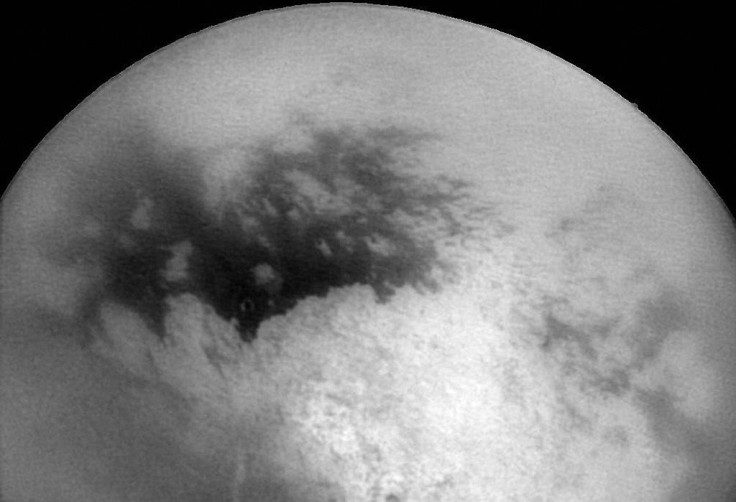Saturn Moon Has Lakes Of Methane: Could There Also Be Life?

Using super-resolution algorithms, researchers analyzed data gathered during the last flyby of the NASA-ESA spacecraft Cassini around Saturn’s Titan moon. What they discovered was quite surprising - Titan has deep lakes of hydrocarbons.
Unlike Earth where lakes are often filled with water, Titan lakes are filled with liquid methane. Researchers surmised that the lakes were formed via surrounding bedrocks that chemically dissolve and collapse around the moon’s crevices.
This adds interesting information on the Saturn moon which has been known to contain lakes and seas that change with various seasons. The report, which was released as research papers in Nature Astronomy, said that the lakes go to as much as 100 meters deep and could have been filled via methane rainfalls that spanned thousands of years.
The lakes, however, have dried up by the time the Cassini spacecraft flew by. The Saturn moon is filled with rivers, seas, mountains, plateaus and lakes. It was discovered that almost all the lakes in Titan have the same composition.
The discovery of liquid methane could eventually help scientists find if there is life outside of Earth. Methane gas, which is abundant on Earth, comes from organic life. This info could help the European Space Agency which plans to collaborate with manufacturing firm Airbus, to launch a probe in 2022 to look for alien life in Saturn’s moons. The space exploration will be done in Titan, Europa, Ganymede and the moon Callisto of Jupiter.
The bodies of water found on Titan has always been compared to those on Earth but the recent discovery of liquid methane just shows how different the two planets are.
"It is as if you looked down on the Earth's North Pole and could see that North America had a completely different geologic setting for bodies of liquid than Asia does", Jonathan Lunine, a Cassini scientist and coauthor of one of the papers, said.
The research was funded by NASA and also includes other scientists such as Alex Hayes, Cornell associate professor of astronomy; Roberto Seu, University of Rome, Italy; Giuseppe Mitri, International Research School of Planetary Studies, D'Annunzio University, Italy; and Ralph Lorenz, Johns Hopkins University Applied Physics Lab.
The research highlighted the fact that much like what happens on Earth, the flow of liquid hydrocarbons often carve out the geological landforms and the lake areas are a good place to start searching for organic life in this side of the solar system.
© Copyright IBTimes 2025. All rights reserved.





















